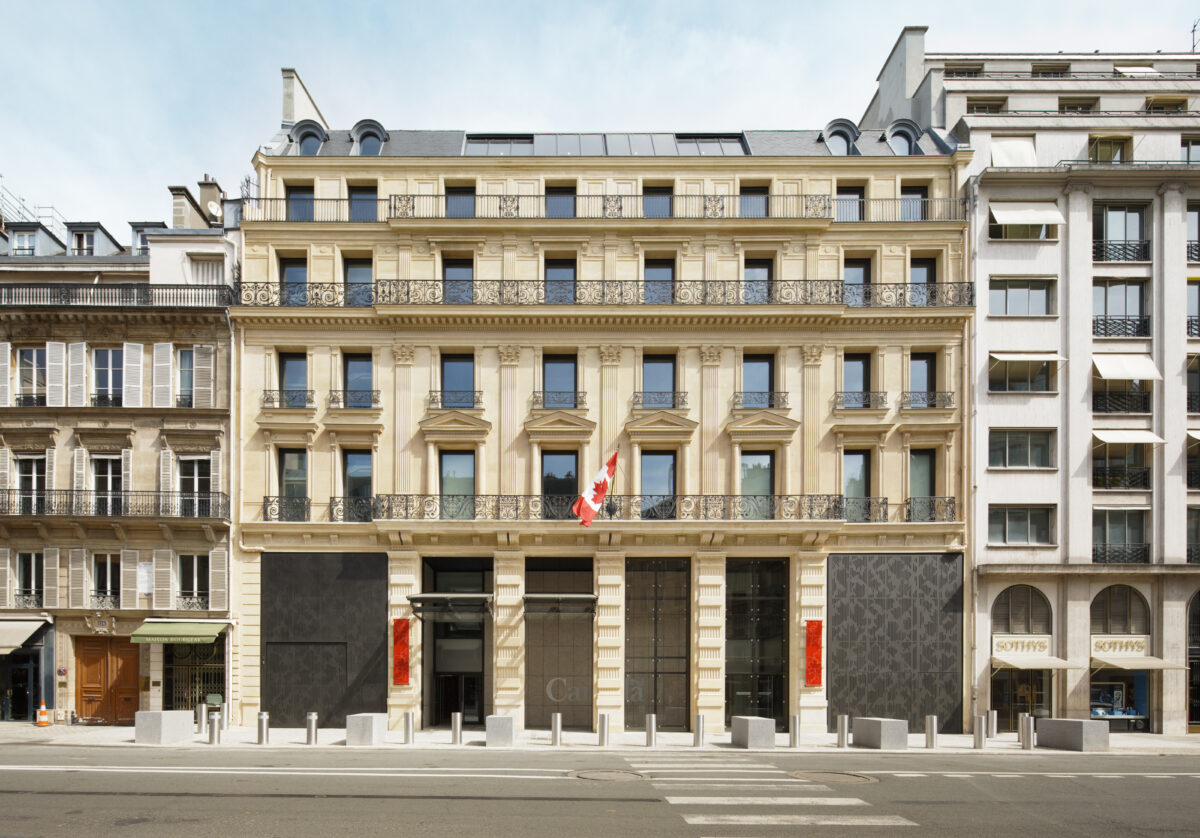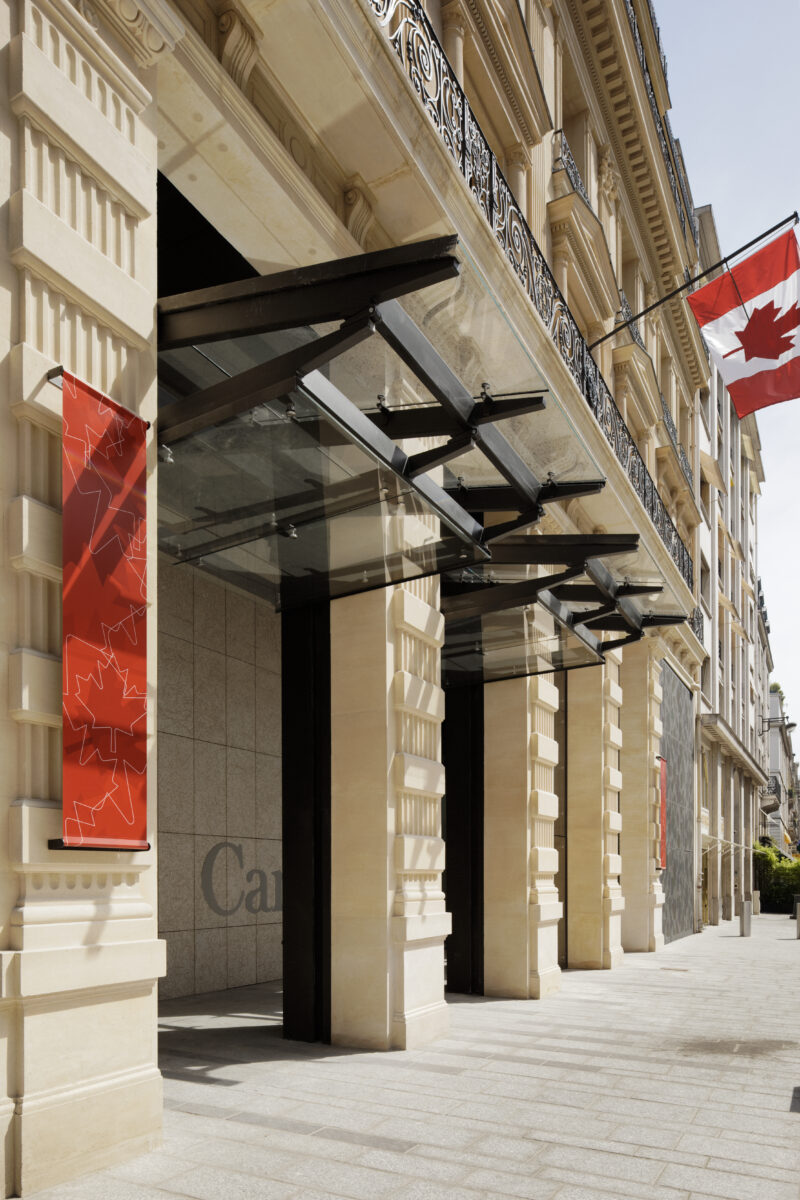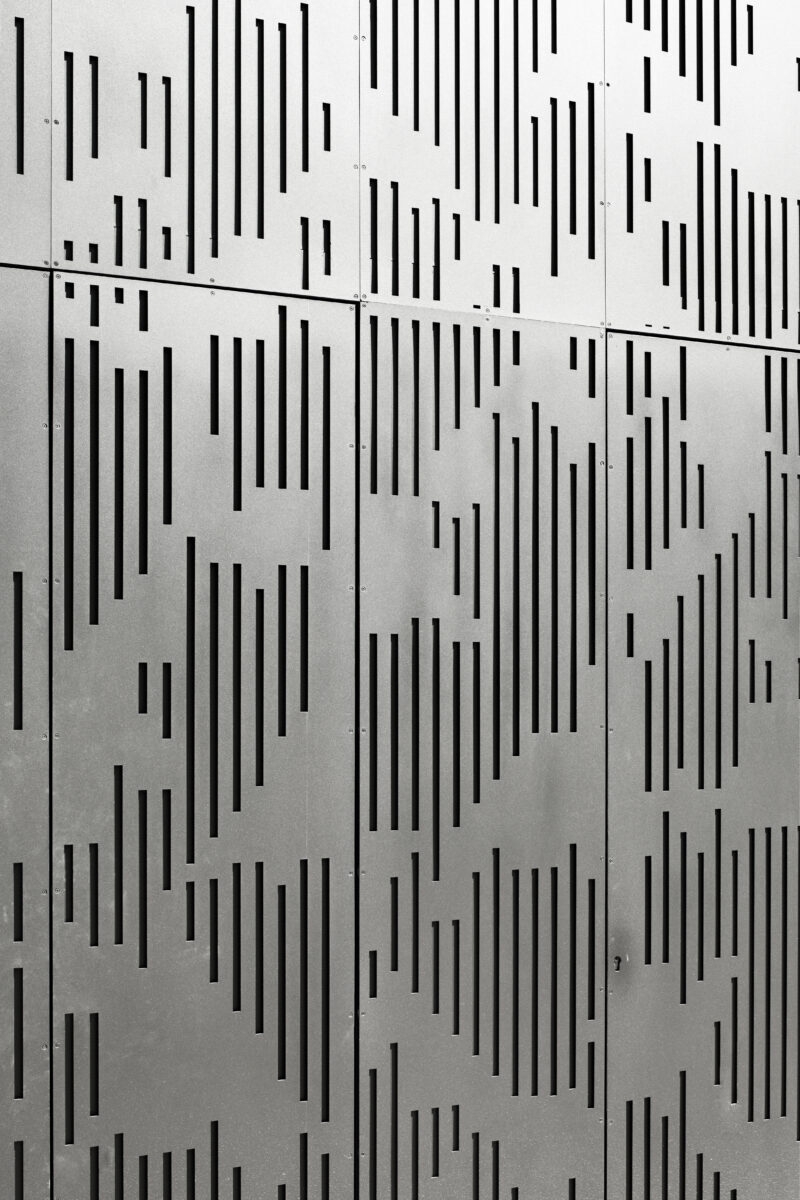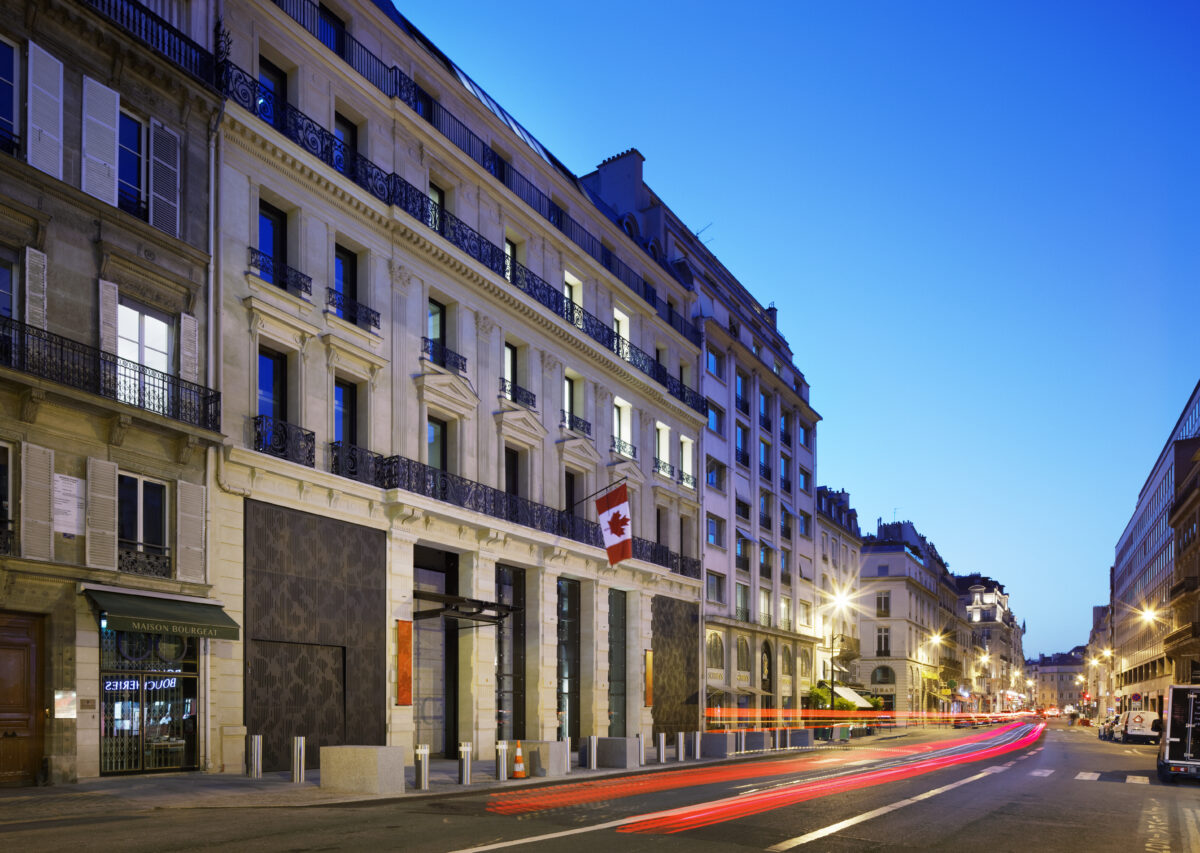







The Faubourg Saint Honoré stands out by its Haussmannian architecture from the late 19th century. This new site is a factor of double integration for the Embassy: in France with the typical Parisian facade and in Canada with the presence of the Cultural Center looking directly on to the street.
The reunion of the Embassy and the Cultural center brings new architectural dynamics to the building with the creation of new exceptional spaces: an inner garden, extensive high-ceiling shared office spaces and a rooftop terrace with a panoramic view of the city.
Creating a link between cultural heritage and modernity, the architectural stance shows great signs of contemporaneity. The original ground-floor facade was entirely recomposed to create a monumental entrance along the four central bays. The public enters the building through a 4-meter-deep double-height porch entrance. The walls of this porch entrance have a ribbed appearance due to the use of the traditional Canadian Tyndall stone. It is ornamented on both sides with a manganese metal cladding decorated with vegetal patterns that rise to the first level of the building, created by Micah Lexier . Instead of the traditional double-viewing door, there are two glazed foldable canopies that mark the entrance to the building and are for the passerby visual information on the opening hours.
Inside, the historical courtyard becomes a two-level atrium and exhibition space designed to host the activities and events of the Canadian cultural center under a vast 144m² (1,550 sq ft) glass roof. The project also highlights the country’s artistic production with the presence of several artworks by Canadian contemporary artists integrated into the building. The venue is designed to represent Canada: vast, spacious, bright and open to all.
On the upper levels, the spaces dedicated to the embassy have been entirely remodelled with their future function as architectural concepts. That way, the constraints specific to Haussmannian apartments have been diverted in order to keep only the harmony of it. The typical Haussmannian vanishing points have been preserved and highlighted to emphasize the link between the Canadian representation and the surroundings of the building.
Architecte
VIGUIER architecture urbanisme paysage
Architectes canadiens
Julian Smith (Julian Smith Architects)
Sam Cox (Affaires mondiales Canada)
Maître d’oeuvre d’éxécution
Artelia
Bureaux d’études techniques
Artelia (Technique)
Arcora (Façade)
Scyna 4 (Structure)
Lamoureux (Acoustique)
GSIR (Cuisine)
Pollen (Commissioning)
CSD Faces (Conseil sécurité incendie, SSI)
Socotec (Bureau de contrôle, SPS)
Artelia (HQE), GTA (Géomètre)
Entreprise de construction
Pradeau Morin (Eiffage)
Consultant codes et normes canadiennes
Gagnon Letellier Cyr Ricard Mathieu et Ass. Architectes / Technorm
Œuvres d’art intégrées
Micah Lexier
Stephen Andrews & Mosaika
Marianne Nicolson
Public Studio & Eshrat Erfanian
WAA / Nadia Myre
Certifications
BREAAM Excellent (2009)
HQE rénovation niveau très bon
Associé/Directeur de projet
Andres Larrain
Chefs de projet
Deborah Pill
Thomas Poletti
Laure Barthelot
Équipe projet
Axel Kronborg
Catherine Kirk
Julie Lavergne
Matthew Kella
Maelle Vandervynckt
Architecture paysagère
Benjamin Doré
Arnaud Mermet-Gerlat
Lionel Sikora
Images de synthèse
Benoit Paterlini
Amélie Bellaud
Giovanni Barbagallo